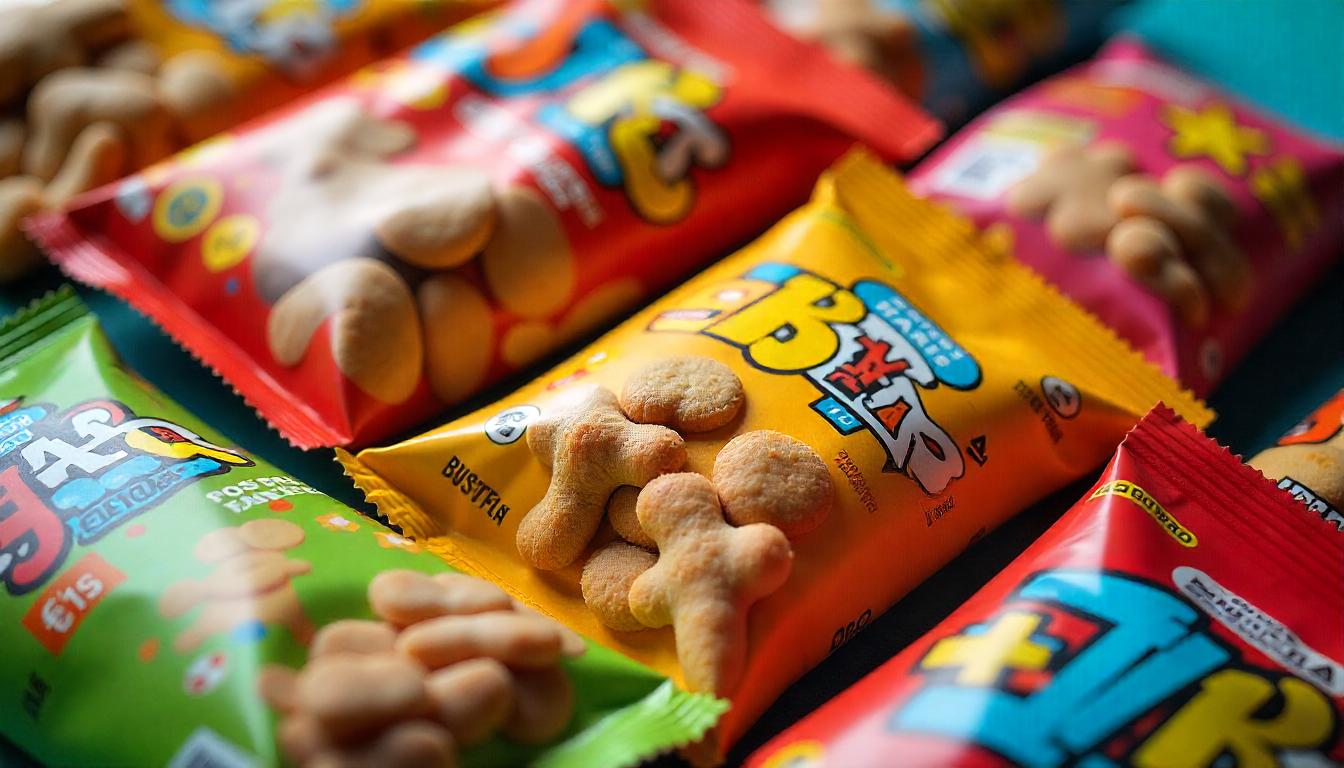Ah, grocery shopping… the ultimate battleground for every parent.
Between deciphering cryptic labels and avoiding the sugar bombs disguised as “chocolate delight,” ensuring your child’s food is safe can feel like navigating a minefield blindfolded.
Fear not, brave parent!
This practical guide will arm you with the knowledge and strategies needed to uncover the hidden dangers lurking in your child’s food and empower you to make healthier, safer choices for your family.
Let’s turn you into a food safety ninja, one aisle at a time.
Identifying Dangerous Ingredients
First things first: Let’s play detective and unmask those harmful additives sneaking into your pantry. Here are the top 10 culprits to watch out for:
- High-Fructose Corn Syrup (HFCS)
Health Impact: This sweet seducer transforms into obesity, diabetes, and a side of stubborn impatience during tantrums. Think of it as sugar’s evil twin. - Artificial Colors
Health Impact: Often linked to hyperactivity and allergic reactions. Your child’s favorite candy bar might be coloring them inside and outside the lines—literally. - Preservatives (like BHA and BHT)
Health Impact: Linked to cancer and immune system issues. Sounds like preservatives have overstayed their welcome. - Artificial Flavors
Health Impact: Can cause headaches and allergic reactions. Nothing says “childhood joy” like a synthetic vanilla headache. - MSG (Monosodium Glutamate)
Health Impact: Reporting stories of headaches, sweating, and nausea in sensitive children. Mom’s garlic shrimp suddenly has a dark side. - Trans Fats
Health Impact: Raises bad cholesterol levels and increases the risk of heart disease. Even your favorite fries have a sinister side. - Sodium Nitrite
Health Impact: Linked to cancer. Those colorful deli meats are colorfully deadly. - Propylene Glycol
Health Impact: Can cause kidney and liver damage in large amounts. Sounds like a sci-fi villain name, but it’s lurking in your child’s snacks. - Sodium Benzoate
Health Impact: Associated with behavioral issues and hyperactivity. Parents’ worst nightmare: candy that turns your kid into a little Hulk. - Carrageenan
Health Impact: Can cause inflammation and digestive problems. It’s like a digestive low blow in their favorite smoothie.
Smart Shopping Strategies
Now that you can spot the bad guys, let’s conquer the grocery store with these savvy shopping moves:
- Navigate the Aisles with Purpose
Pro Tip: Make a list and stick to it. Aim to shop the perimeter of the store where fresh foods like fruits, vegetables, dairy, and meats reside. The middle aisles are where the processed villains hide. - Read Labels Like a Boss
Pro Tip: The longer the ingredient list, the more likely it contains unpronounceable chemicals. If you can’t say it out loud, question it out loud. - Choose Brands Committed to Clean Ingredients
Pro Tip: Support companies that prioritize transparency and natural ingredients. Look for certifications like “Organic,” “Non-GMO,” and “No Artificial Preservatives.” - Opt for Whole, Unprocessed Foods
Pro Tip: Think fresh and avoid packaged goods. Whole foods are generally free from added toxins and retain their natural goodness.
Cooking and Preparing Safe Meals
Let’s step into the kitchen… the safe zone where you’re the superhero keeping the villains at bay:
- Simple Recipes Free from Harmful Additives
- Homemade Chicken Nuggets: Use whole chicken breast, breaded with whole wheat breadcrumbs, and baked to golden perfection. Say goodbye to mystery additives found in store-bought nuggets.
- Fruit and Veggie Smoothies: Blend fresh fruits and veggies with a splash of milk or a dairy-free alternative. No carrageenan here, just pure, delicious nutrition.
- Tips for Meal Prepping and Planning
Pro Tip: Plan your meals around fresh ingredients and prepare batches in advance to avoid the temptation of processed convenience foods. Invest in some good storage containers and your future self (and family) will thank you.
Educating Your Children About Food Choices
Knowledge is power, and getting your kids involved can make them more mindful eaters:
- Involving Kids in Meal Preparation
Pro Tip: Let your children help in the kitchen. Whether it’s washing veggies, mixing ingredients, or decorating cupcakes, participation makes them more invested in what they’re eating. - Teaching Them to Read Labels
Pro Tip: Make label-reading a game. Challenge your kids to spot the healthiest ingredient or find additives that sound like they come from a sci-fi movie. It’s fun and educational!
Conclusion
Ensuring your children’s food is safe doesn’t have to be an uphill battle.
By identifying harmful ingredients, adopting smart shopping strategies, cooking safe meals, and educating your kids, you’re creating a fortress of health around your family.
It’s all about being proactive and making informed choices… one grocery trip at a time.
So, put on your superhero cape, grab that shopping list, and embark on the quest for cleaner, safer food.
Your family’s health and happiness depend on it, and hey, you might just enjoy the journey!


